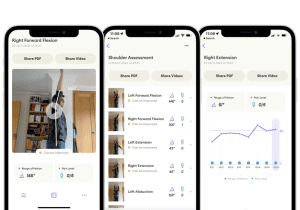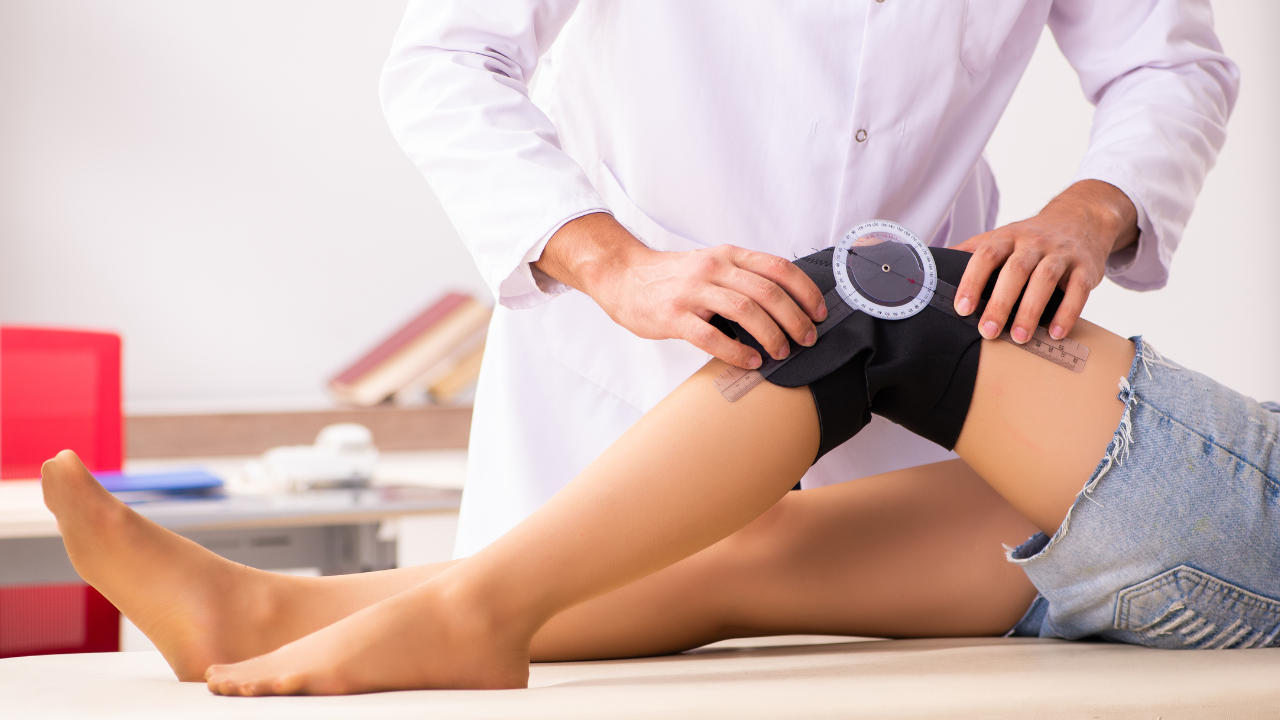Accurate measurement of joint Range of Motion (ROM) plays a critical role in patient care, diagnosis, and treatment planning. Traditional methods, like goniometers and visual estimations, have been the standard tools for healthcare professionals to measure range of motion of a joint. However, these methods are prone to human error and inconsistency. With the rapid advancements in artificial intelligence (AI) and machine learning, we’re now witnessing a transformative shift in ROM measurement technology. In this blog post, we’ll explore how AI is revolutionising the way we measure range of motion of a joint and the potential benefits it can bring to patient care.
The Growing Market for AI in Healthcare
Musculoskeletal health is a major part of US healthcare, and so is investment in AI technologies. The global AI in healthcare market is projected to grow from USD 14.6 Billion in 2023 to USD 102.7 Billion by 2028. The National Health Interview Survey (NHIS) reported that 126.6 million US adults had a musculoskeletal disorder between 2013-2015. That’s 50% of adults in America. With such significant numbers of people with musculoskeletal issues, it’s time to embrace the future of joint ROM measurement with AI pose estimation.

Reflex: Shoulder Mobility App uses AI to measure shoulder range of motion for flexion, abduction, adduction, internal rotation, external rotation, and extension.
AI Pose Estimation: Transforming Consultations and Patient Care
AI pose estimation is revolutionising consultations and patient care by allowing healthcare professionals to focus on patients rather than data collection. By streamlining the process of measuring range of motion of a joint, AI saves valuable time that can be devoted to personalised patient interactions and treatment planning.
As patients become more tech-savvy and want to take control of their own health metrics, adopting AI solutions that save time can significantly enhance overall efficiency and patient satisfaction in the healthcare industry.
AI Goniometer: Measure Your Joint Range of Motion Today In our iOS TestFlight
You can see AI joint range of motion measurement in action yourself using our TestFlight iOS App. TestFlight is an iOS Platform that allows people to test new features of apps. We have created a simple QuickPose demo app, which includes Range of Motion measurement for the shoulder, knees, hip, and neck. You will need an iPhone or iPad to run TestFlight.
Get Access to Our TestFlight Demo
Check out QuickPose iOS SDK abilities in our TestFlight Demo app.
Harnessing the Power of Shared Data and Learnings
Large-scale data collection enabled by AI pose estimation holds the key to better, data-driven decision-making in healthcare. With the ability to measure range of motion of a joint in thousands of patients simultaneously, the wealth of data generated can inform optimised post-surgery exercises and recovery periods. Such data-driven insights can ultimately lead to improved patient outcomes and a more robust understanding of joint health.
The Future of Joint Range of Motion Measurement with QuickPose
QuickPose, an AI-powered solution, offers a seamless and accurate way to measure range of motion of a joint. A production-ready iOS SDK, QuickPose is designed to integrate effortlessly with healthcare providers’ existing apps, making implementation a breeze. Its state-of-the-art AI algorithms boast an impressive accuracy rate of up to 5º, on par with traditional goniometers.
For healthcare providers, AI technology means being able to assess patients’ ROM during video calls or develop apps to monitor progress and prescribe exercises. The ease and precision offered by QuickPose offers many creative ways that you can integrate QuickPose into your service.
Next Steps
Curious to explore more of what you can do with AI Pose Estimation? Take advantage of these options with QuickPose:
- Test the capabilities of QuickPose’s demo app with joint measurement by registering for our TestFlight here
- Clone our GitHub repo by visiting our GitHub Repository here





